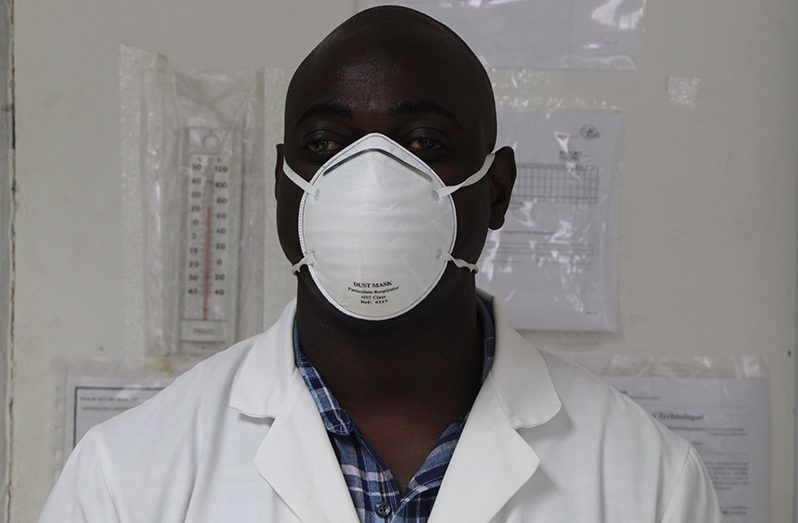-as ‘Blood Bank’ introduces leukoreduction process
IN a bid to provide safer blood transfusions, especially to more vulnerable patients, the National Blood Transfusion Services (NBTS) has spent $4.8 million (US $23,000) to procure 1,000 kits that will be used to remove white blood cells from donated blood.
Director of the NBTS, Dr. Pedro Lewis, recently told the Sunday Chronicle that the initiative was taken to start a leukoreduction process at the NBTS’ blood donation site at the Georgetown Public Hospital Corporation (GPHC) compound. This process, Dr. Lewis explained, involves removing the white blood cells from the blood collected from voluntary donors. The blood is passed through a filter that is able to remove those blood cells.

“As we know most of the viruses live in the white blood cells and when you remove the white blood cells, you remove the virus,” Dr. Lewis said, explaining that the removal of the white blood cells reduces certain infections when an individual receives donated blood.
He also related that in some occasions, when a patient receives the donated blood, the patient would usually experience fevers or cold sweats. He said that this occurs due to generation of cytokines in the blood. And, he affirmed that with the removal of the white blood cells, the production of the cytokines would be reduced.
What the NBTS will be doing is referred to as prestorage leukoreduction. This means that the blood will be filtered before it is stored and as such, before it is given to a patient in need.
“This method here is very simple but it is very expensive… the filter is very expensive,” the Director said, later stating that 1,000 of the blood bags used in the leukoreduction process were procured for about $4.8 million. The blood bags are not reusable. He also noted that this process will be used primarily for those patients who need multiple transfusions, such as those individuals who are diagnosed with sickle cell, premature babies and patients with kidney failure.
He, however, noted that the NBTS is hoping to work along with the local authorities to increase the number of blood bags procured next year. In future, he said the goal is to engage in the leukoreduction process for all the units of blood donated for use.
When asked about the cost-benefit analysis of introducing the costly technology, the Director emphasised that it is better to offer safer transfusion to patients in need.
“We have approximately 4-5 per cent of people in our population with sickle cell and thalassemia disease, we also have a lot of patients with kidney failure,” he said, noting that the leukoreduced blood would reduce the risk of infection and discomfort when these patients are given the blood.
Specifically on preventing discomfort caused by fevers and cold sweats- both reactions that may occur after transfusions- the Director also noted that using leukoreduced blood would reduce the need to use prophylactic hydrocortisone or prophylactic piriton to mitigate those reactions.





.jpg)








